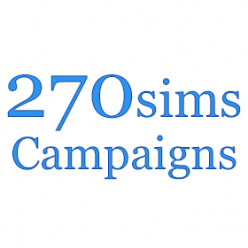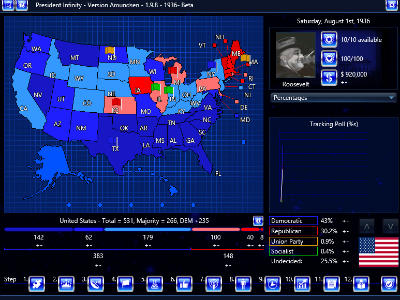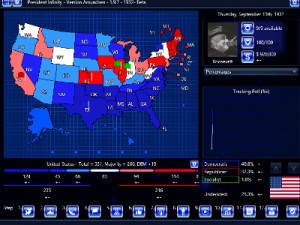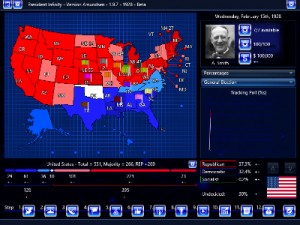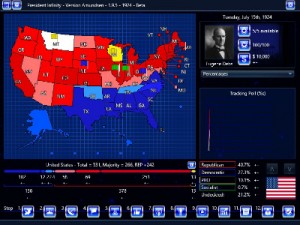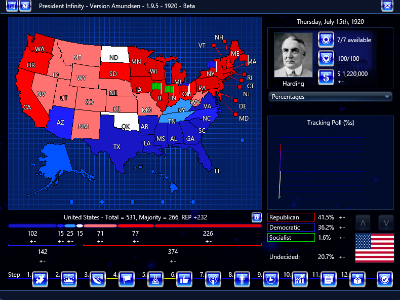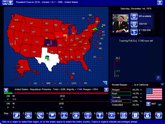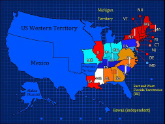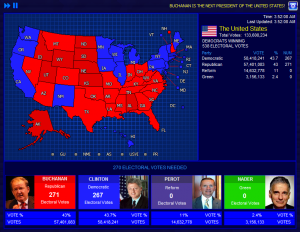*The Historical Scenario Commission greatly updated this scenario on Sep 30, 2017. It can be downloaded here: United States – 1936 v.2.0
America is still caught in the Great Depression; however, most of the country has rallied behind the New Deal created by the Roosevelt administration and allied members in Congress. Roosevelt’s popularity virtually assured reelection.
For the Republicans, most of the major figures are unwilling to face certain defeat in the election. As such, Republicans rally behind a liberal alternative to FDR–Alf Landon. His only serious competitor is the progressive icon William Borah, who is even more liberal than Landon, and arguably more so than FDR.
FDR, for the most part, is running unopposed. His closest serious challenge is the inexperienced conservative anti-new deal politician Henry Breckinridge.
*Various inconsequential “Favorite Son” candidates also won delegates. They currently are not in the game, but will be added in a future update. They really won’t impact an election with two most unopposed candidates; however, they would work well in the what-if scenarios.
The Union Party and Socialist Party are the two default third parties.
This scenario allows for some What-If candidacies:
- What if the Southerners had pushed FDR’s Secretary of State, Cordell Hull, to run as a Southern moderate compromise choice against FDR?
- What if FDR’s VP, John Nance Garner of Texas, an anti-New Dealer, had run against FDR in 1936 instead of waiting for 1940?
- What if the ambitious populist, Huey P. Long, had not been assassinated in 1935 and ran as a Democrat instead of under his proposed 3rd party?
- What if Huey P. Long was not assassinated and ran under his proposed progressive party, Share Our Wealth. This party believed that the New Deal did not go far enough, and that certain basic needs must be provided. None should be too rich and none should be too poor–every man a king.
- Some Republicans were trying to push Herbert Hoover to run against FDR again. What if he had ran?
- Robert Taft, a leading conservative Republican voice and son of former President Taft, had supporters urging him to run. What if he had listened to the calls for his candidacy?
- Arthur Vandenberg, one of the most powerful senators of his time, was urged to run for office, but he declined as well. What if he had not?
- Some called for Theodore Roosevelt’s son, Teddy Jr, to run in order to excite the party and invoke a time of Republican vitality. What if he had run?
- John Bricker, an attorney in Ohio, with higher political ambitions, was a noted conservative Republican opposed to the New Deal. What if he had listened to the calls to run?
Feedback, along with any suggestions to remedy any problems, is desired.
